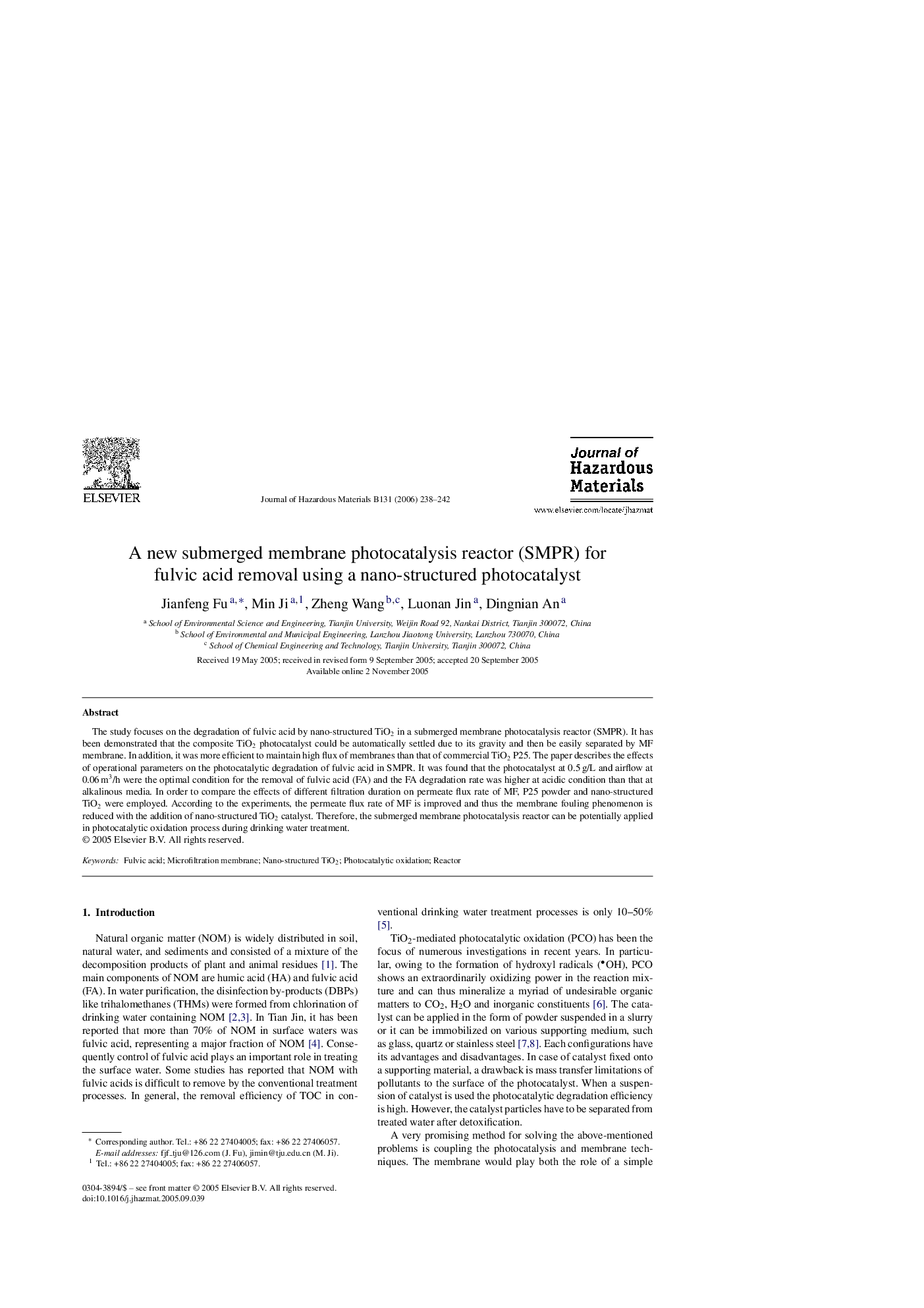| Article ID | Journal | Published Year | Pages | File Type |
|---|---|---|---|---|
| 585851 | Journal of Hazardous Materials | 2006 | 5 Pages |
The study focuses on the degradation of fulvic acid by nano-structured TiO2 in a submerged membrane photocatalysis reactor (SMPR). It has been demonstrated that the composite TiO2 photocatalyst could be automatically settled due to its gravity and then be easily separated by MF membrane. In addition, it was more efficient to maintain high flux of membranes than that of commercial TiO2 P25. The paper describes the effects of operational parameters on the photocatalytic degradation of fulvic acid in SMPR. It was found that the photocatalyst at 0.5 g/L and airflow at 0.06 m3/h were the optimal condition for the removal of fulvic acid (FA) and the FA degradation rate was higher at acidic condition than that at alkalinous media. In order to compare the effects of different filtration duration on permeate flux rate of MF, P25 powder and nano-structured TiO2 were employed. According to the experiments, the permeate flux rate of MF is improved and thus the membrane fouling phenomenon is reduced with the addition of nano-structured TiO2 catalyst. Therefore, the submerged membrane photocatalysis reactor can be potentially applied in photocatalytic oxidation process during drinking water treatment.
